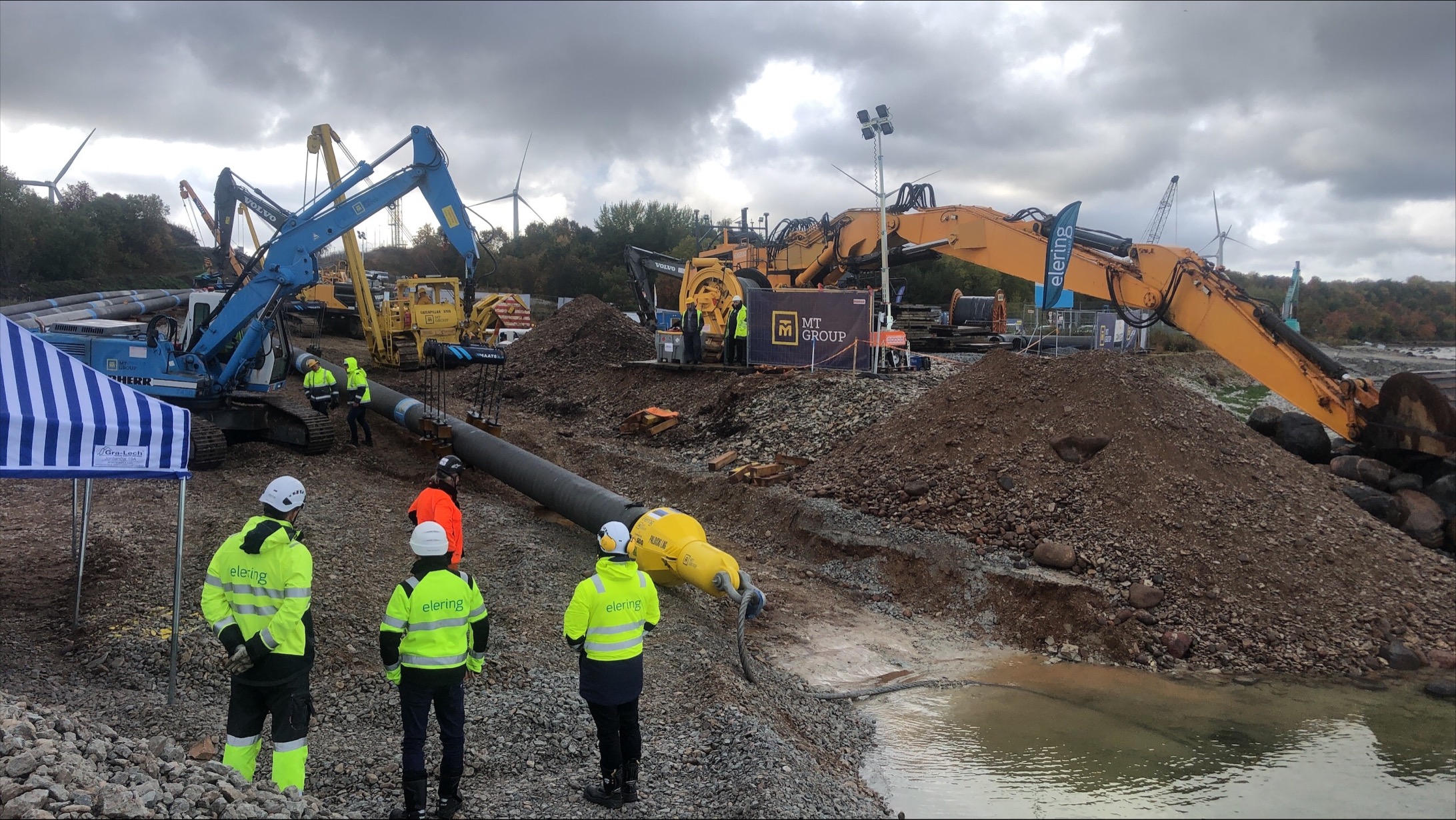11.10.2022 15:40
An offshore pipe necessary to receive the LNG floating terminal in Paldiski is set to be completed by Elering
The pipeline construction of the LNG terminal to be constructed in Paldiski has reached the stage of laying the offshore pipe, which creates a connection between the gas infrastructure on land and the equipment on the pier.
"Efforts in procuring the necessary equipment and materials and the design and construction work are occurring at a breakneck pace, enabling us to confirm that Elering will complete the construction of the pipeline connection on schedule by the end of November," said chairman of the board of Elering Taavi Veskimägi.
For the installation of the offshore pipe, four sections of pipe approximately 200 metres in length have been welded together on land. Consecutive pipe sections will be pulled into the sea and welded together into one approximately 750 metre long pipeline. The pier-side end of the pipe has flange connections, which are used to bring the end of the pipe from the bottom of the sea to the hauling pier. A winch with a pulling force of nearly 300 tons will be used to pull the pipe into the sea, which is located on a barge about a kilometre from the shore. The boat will be held in place by two giant 18-ton anchors. A special pulling head was made to pull the pipe. Work will be carried out by the Lithuanian company MT Group, which also participated in the construction of the Balticconnector.
For the sake of clarity, it is important to emphasise that Elering is building the reception capacity of the LNG floating terminal in Paldiski in accordance with the agreement concluded between Estonia and Finland and based on the technical data of the floating terminal leased by the Finnish party. At the moment, only one party has shown interest in bringing the floating terminal to Paldiski – FSRU OY. They have submitted the mandatory application by law to connect to the Estonian gas system. This application is the basis for the design and construction of the technical solutions for the LNG floating terminal. If other third parties are interested in connecting an LNG floating terminal in Paldiski to the gas network, they must submit an application for connecting and the technical parameters of the terminal to be connected. Based on this, it is possible to evaluate whether or not and to what extent it would be necessary to rebuild the connection point of the gas network currently being constructed in order to connect it to the gas system of another floating terminal.
According to Taavi Veskimägi, based on the gas adequacy analysis updated weekly in cooperation with the gas system operators of Estonia, Latvia and Finland, the security of gas supply of the region is guaranteed based on the reserves of the new Gulf of Finland and Klaipeda floating terminal and the Latvian gas storage. This is also under the condition that the Baltic electricity system works as part of the continental European electricity system and a large amount of gas moves out of the Baltics towards Poland through the Lithuanian-Polish pipeline connection. At the same time, according to Veskimägi, in terms of big picture security, more terminals are better than fewer to ensure the security of supply. "According to the forecasts of the gas system managers of the region, gas supply sources and infrastructure are sufficient to cover the winter gas consumption of the region," says Veskimägi. At the same time, from the security of supply point of view two LNG floating platforms will always be better than one. "If there are additional requests to connect additional LNG floating terminals to the gas network in Paldiski, it is essential to obtain the technical parameters of these terminals to evaluate the extent to which the connection point built based on the international agreement and the parameters of the ship currently leased by the Finns needs to be rebuilt," added Veskimägi.
